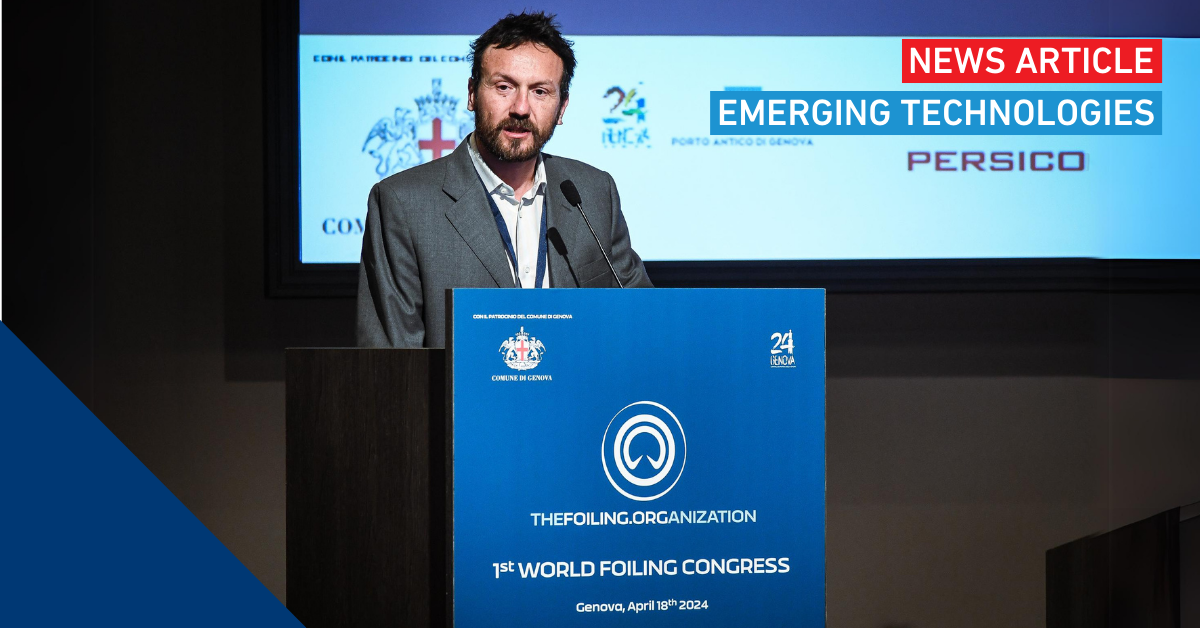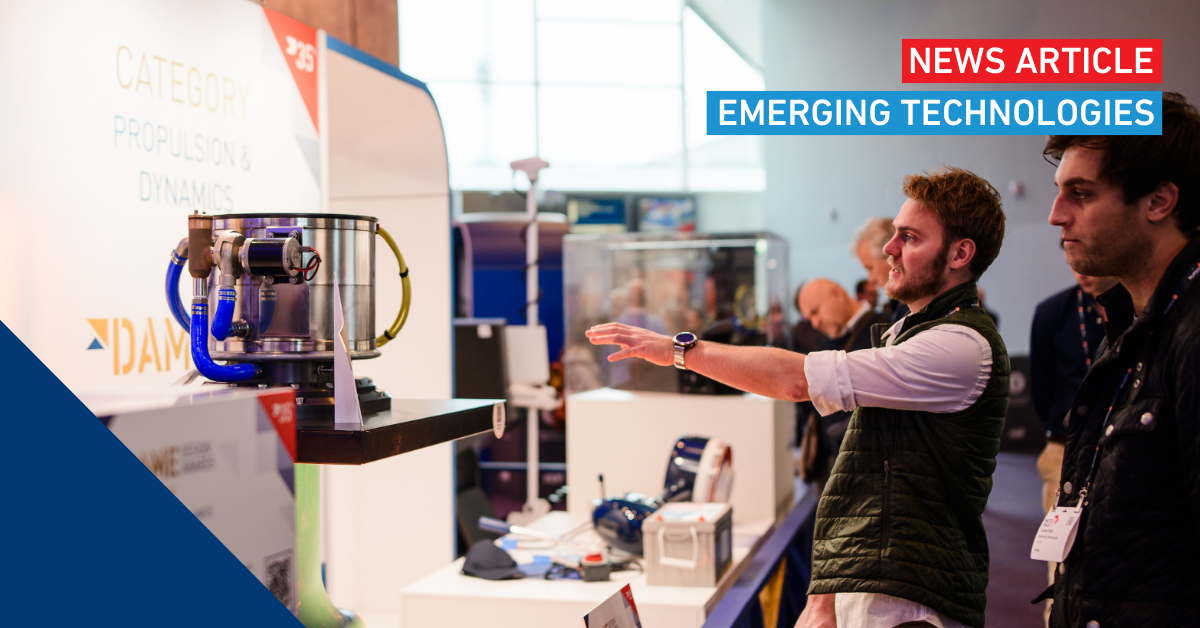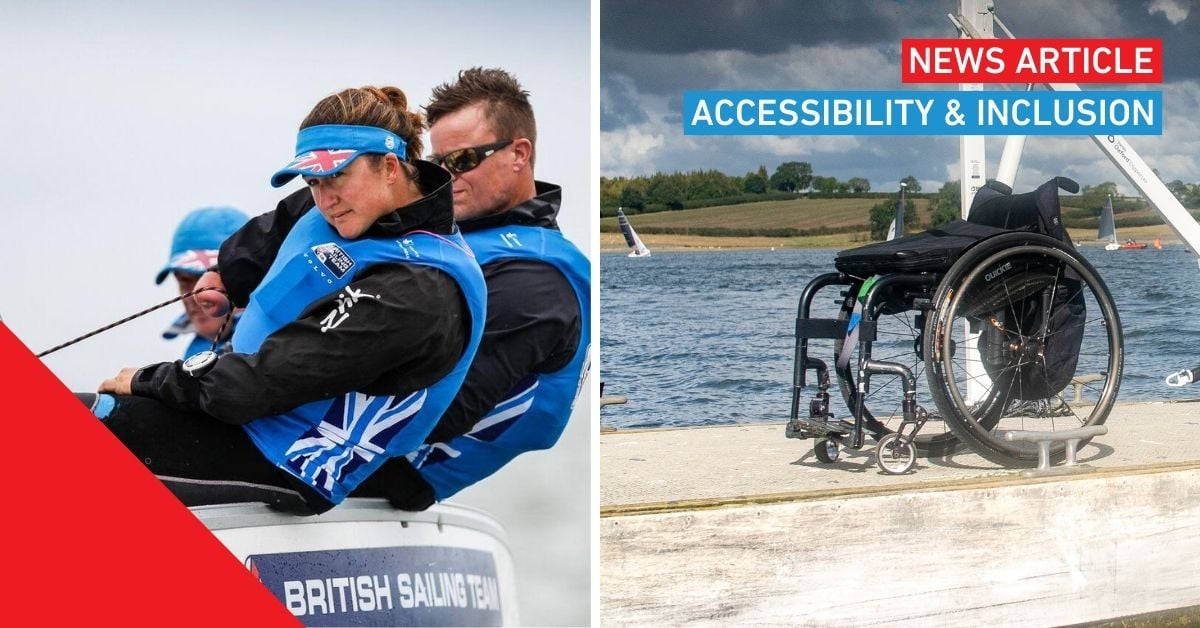Advanced technology praised in Foiling Awards
Inspiring new products show hydrofoil innovation
High speeds for sailors, long range battery electric mobility for motor boaters. Foiling has changed boating. The Foiling Awards celebrate this new branch in waterborne mobility. Metstrade hosts the category ‘innovation technology’ in the award, presenting ongoing improvement of the fly-over-water technology.
WINNER: Waszp new rudder foil
Harvesting on the latest insights in foil design, the team at Waszp have re-designed the rudder foil of the racing class foiling sailboat. The 3.9 meter long boat has become a popular one-design racing class in over 40 countries with over 1500 sailors joining the fleet. The first boat was launched in 2016 to a design by long time sailor Andrew McDougall. The boat builders want to improve on the design over the years, but this is a hard thing to do in a one design class where all the boats need to be the same to allow for fair competitive racing.
This year, the team introduced the improved rudder foil. It fits in the original rudder bracket in which the rudder blade slides up and down. This way, the rudder can be lifted when the boat approaches the beach and enters shallow water. The horizontal part, providing lift, is clicked on the vertical section of the rudder and secures with a push button. The design is improved to reduce ventilation. Significantly less air bubbles occur around the foil. There is more lifting force and less turbulence, making the boat faster and allowing the sailors to push the boat even harder.
Sailors that tested the new rudder foil notice that with this new design, take-off in light winds has become easier and the boat glides longer during manoeuvres, allowing the sailors more time to change directions and pull the sheet on the new course, before the hull hits the water.
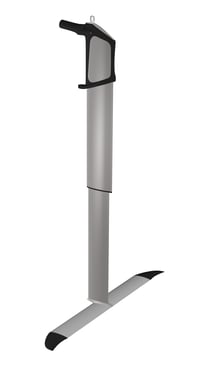
SiFly water jet propulsion
Water jet propulsion to fit under an electric foil board is developed by Bulgarian e-foiler manufacturer SiFly. The company, founded in 2019 by Oympic Formula Kite athlete Alexander Bachev, aims to bring the thrill and speed of flying low over water to a wider audience.
Driving power does not come from a kite, but from electric motors. Batteries in SiFly’s design are integrated in the board. For transport and storage, the SiFly boards and foils are easily assembled. While the first models are powered by propellers at lower end of the vertical section of the foil, the brand introduced water jet propulsion last year.
All moving parts of the propulsion under water are inside a cylinder shaped housing, making the propulsion much safer. Water jets are also more efficient and powerful at high speeds than propellers, allowing the e-foil boards to reach higher speeds and have longer lasting battery capacity. The electric engine is mounted in a recess of the board above the ‘mast’, the vertical part of the foil. Two cables connect to the battery. The mast is mounted with a click-in quick release system, just like the bulb under the mast that also connects to the wings.
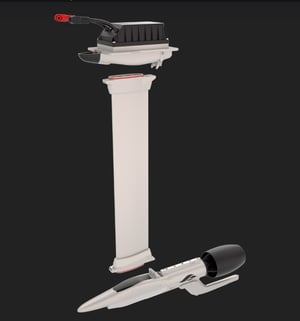
Foil Drive Assist Slim
Getting from floating in the water to riding above it on foils is the hard part. Wing foilers, wave riding foil board surfers and foilboarders who get going by pumping their board up and down, experience this every ride. Australian board rider Paul Martin suffered a shoulder injury but wanted to keep on surfing. From experience with e-foilers and other small craft, he decided to develop an aid to overcome the hard part of gaining speed and getting on foils.
The Foil Drive Assist is an electric engine that can be fitted on an existing foil board to achieve this initial speed. A battery is mounted between the board and the vertical strut of the foil, connected to an electric engine that is fitted around the upper part of the foil mast. The package will propel the board to the speed need to get the board above the water. When the foils start working and speed increases, the engine at the upper part will rise above the water and the foil board will be unmotorised.
The package is light weight at just over 4 kilograms or just under that, depending on the chosen battery capacity. This light weight is needed because the board needs to be as light as possible to surf in bigger waves and make tight turns in the ‘lip’ of the wave. When local surfers saw Martin ride his board with ‘launch assist’, demand was imminent. Foil Drive Assist is available since 2021, the slim version was launched in ‘24.

Chubanga Foil V4/V5 Olympic
Hydrodynamic research has been the driving force to create the fastest possible foil for Olympic Formula Kite athletes. The Chubanga Foil V5 / V4 Olympic is designed to accelerate, allow for higher speed and tighter angles upwind and deeper courses on the downwind legs of a race.
The designers studied a wing and mast profile that would be accessible and easy to handle as much as fast and performing. The mast profile is optimised to minimise ventilation (air bubbles along the profile). The mast is longer yet still very rigid as a result of research and the use of advanced materials in the composite. A newy designed connection between the mast and wings has made the foil even more stable. Connections are more precise with minimal movement or seams, resulting in reduced drag and giving more performance.
The new baseplate makes adjusting the rear wing angle easier. Athletes like to modify the angle of the rear wing according to wind and wave circumstances on the race track. Two versions of the glider are available, for individual athletes to choose. The difference is the rear fin on the stabilizer, which adds stability but makes manoeuvres more mechanical and less smooth. Without the fin, the ride is more lively and corners are more smoothly.
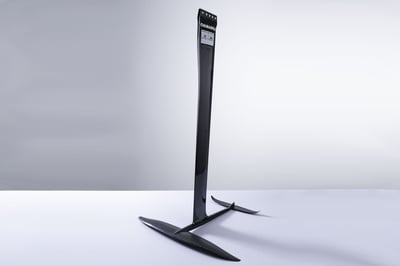
Oceanflight Flightcontrol
Motorboats and yachts on foils require ride control. Enthusiasts often refer to foiling on a boat as riding a magic carpet. When flying low over the water on hydrofoils, there is no rocking or swinging on waves. When vertical masts are used in combination with horizontal foils, the height of the boat above the water is actively controlled by continuous adjustment of the angle of attack of the horizontal profiles under water.
German company Oceanflight, started with four founders in 2022, developed a control system that will keep electric and hybrid vessels straight upon their hydrofoils at the desired height for the speed and waves on the water. Their Flightcontrol basic can be used by any yard that builds hydrofoil boats. It is connected to numerous sensors that gather information about the sea state, the boat’s speed, the angles of hydrofoils and their flaps if they are equipped with that, the rudder wing angle and even objects in the water that could cause damage to the boat and it’s foils.
A very compact computer unit gathers all this information and controls the foils to achieve a truly ‘carpet like’ flight. The control unit is programmed upon installation to match the parameters of the boat it is installed on.
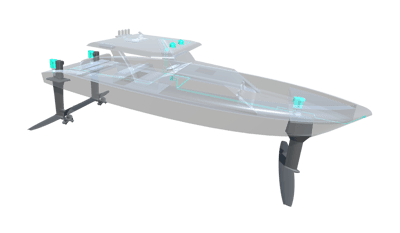
The Foiling Awards contest is organised by the Foiling Organisation and honours the sailors, projects and products that are nominated and chosen by the ‘foiling community’. This is the group of sailors, racing teams, event organisers, yacht clubs, students, universities and research groups, boat builders and naval architects that are involved in the development of hydrofoil boats. There are fourteen categories in which a total of ninety-two (92) contestants are nominated. The categories range from individual sailors and events to production boats and boards. Metstrade is the sponsor of the category ‘innovation technology’, the winner and nominees of which are presented in this article.
The overall winner of the Foiling Award is french kitefoil sailor Erwan Jauffroy, honoured for his solo downwind crossing from Toulon to Calvi—247 km in just 12 hours and 19 minutes. Jauffroy also won the award in the category male athlete. Winners in the òther categories include female sailor Marta Maggetti, Olympic Champion on the IQ Foil, the Foiling Base in Cadiz, Spain, in the category Foiling Pathway and the Birdyfish S in the category Foiling Production Boat. Prizegiving was May 20th in Genoa, Itally.

